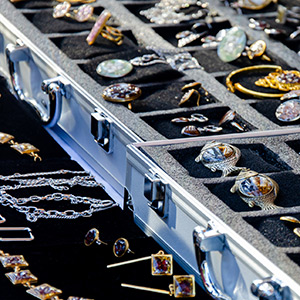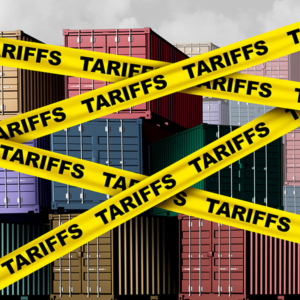
For many jewelers, spring is trunk show season, and the Jewelers’ Security Alliance (JSA) is warning that these events can be a magnet for criminals.
“Historically, we’ve seen crimes happen around these shows,” JSA executive vice president Scott Guginsky tells JCK. “We’re already seeing cases of robberies and thefts, and sometimes violence.”
Trunk shows are potentially dangerous, he says, because they’re so public. While it’s customary for jewelry stores to advertise trunk shows, participating designers should be more circumspect, Guginsky advises.
“If you’re a designer, you should limit what you put out on social media,” he says. “You don’t need to put your whole travel itinerary out in public. You don’t want the bad guys to know where you’re going to be for the next few weeks—because the criminals follow you on Instagram just like your customers do. Use emails to let people know where you are.”
Guginsky recommends treating trunk shows like trade shows: If possible, designers should use a shipping company to transport goods. “That’s the best thing you can do, so you’re not coming in with product and not leaving with product,” he says.
If that’s not feasible, designers should be accompanied by armed security personnel when they bring jewelry in and out of a store.
“The two most dangerous times during a trunk show are the first and last days,” Guginsky says. “When the trunk shows ends, most designers transport their jewelry personally. That’s dangerous. It’s a dead giveaway when you’re rolling a bag.
“No designer should leave a trunk show by themselves. You need escorts.”
He further recommends that designers not leave with merchandise on the sale’s final day, but instead stash unsold items in the jeweler’s vault and pick them up or have them shipped at a later date.
Exhibitors should keep a list and photos of everything they plan to put out at the trunk show, and they should clarify in advance how much of their merchandise is covered by insurance.
“If you’re traveling with that type of jewelry, you should check in with your insurer and understand your travel [coverage] limits,” Guginsky says.
He notes that if merchandise is stolen while left unattended in a vehicle, most insurers will not cover the loss.
Designers should include tracking devices, like Apple AirTags, with their items, adds Guginsky. “If you do get hit, that can be your last glimmer of hope.”
Jewelry stores that host trunk shows also need to do their part.
“The staff should be on heightened alert when they have designers coming from the outside,” Guginsky says. “When you invite people, you have a responsibility to make sure that they’re safe.
“Employees should be looking for suspicious cars in the parking lot, and check if their plates look phony or they’re from out of state. They should be looking for people who are coming in and may be casing the place. Sometimes you can tell, a person just doesn’t feel right.”
Retailers should alert their local police department ahead of time that they’re hosting an event with valuable merchandise.
“Just call and say, ‘We’re having a trunk show, can you give us more of a presence?’” Guginsky suggests. “We have always said jewelers should have an open dialogue with the local PD. Police aren’t there just to take reports.”
If a designer suspects they’re being followed when they leave the store, they should immediately call 911. If their car overheats or gets a flat tire, that might be a sign they’ve been targeted.
“If you have a flat tire, ride on the rim and pull into a well-lit location,” advises Guginsky. “If you pull over by yourself, you’re [more likely] to be victimized. Go where there’s people.”
Finally, he offers two age-old warnings: Jewelers and designers should not take merchandise home, as that could endanger their families. And if they do become the victim of a crime, the safest course of action is always to not resist—a person’s life is more valuable than their merchandise.
Guginsky says that jewelers and designers who notice anything suspicious should contact their local police and the JSA at jsa2@jewelerssecurity.org.
(Photo: Getty Images)
- Subscribe to the JCK News Daily
- Subscribe to the JCK Special Report
- Follow JCK on Instagram: @jckmagazine
- Follow JCK on X: @jckmagazine
- Follow JCK on Facebook: @jckmagazine






